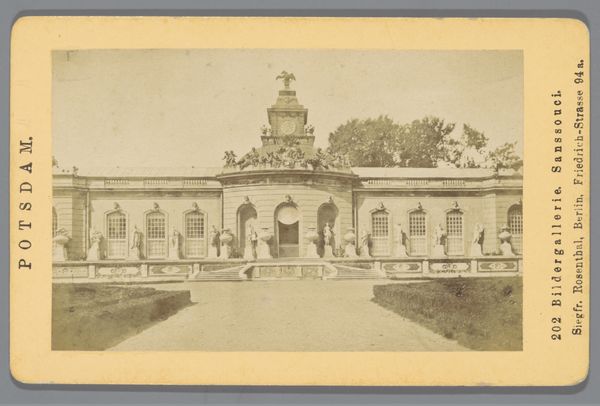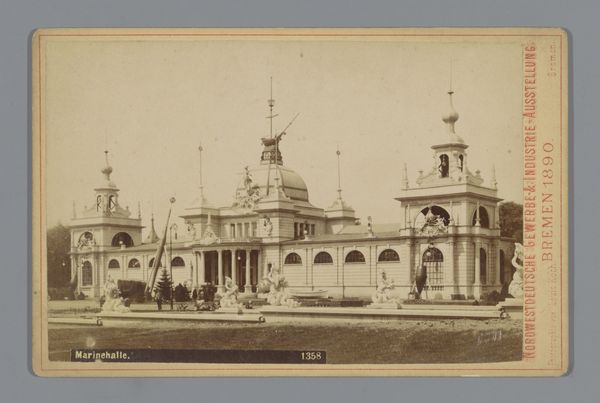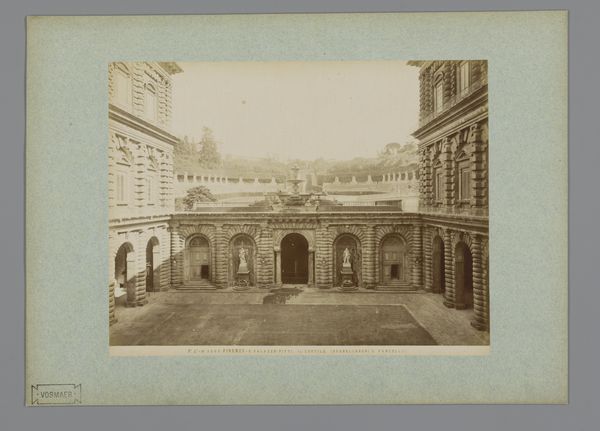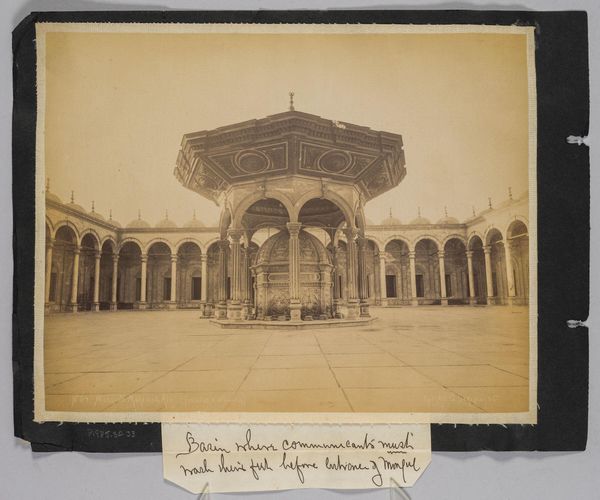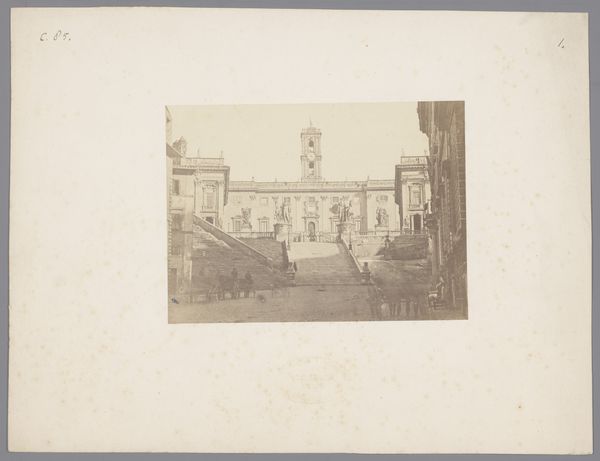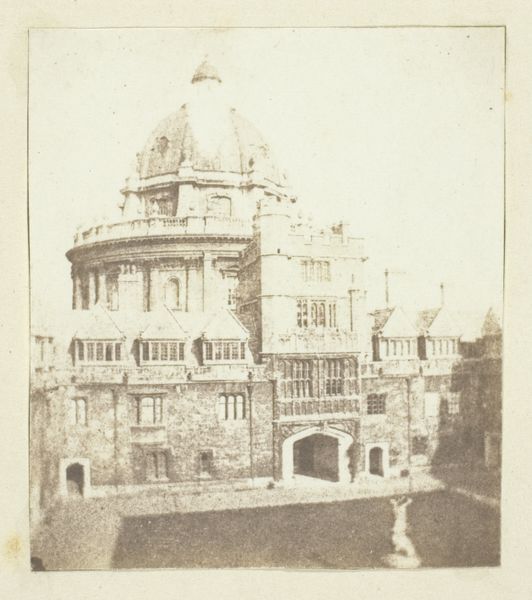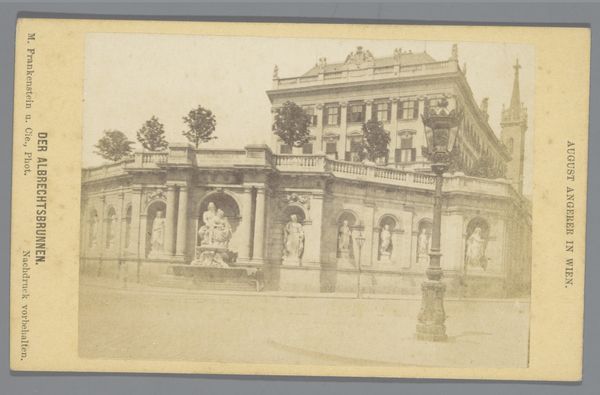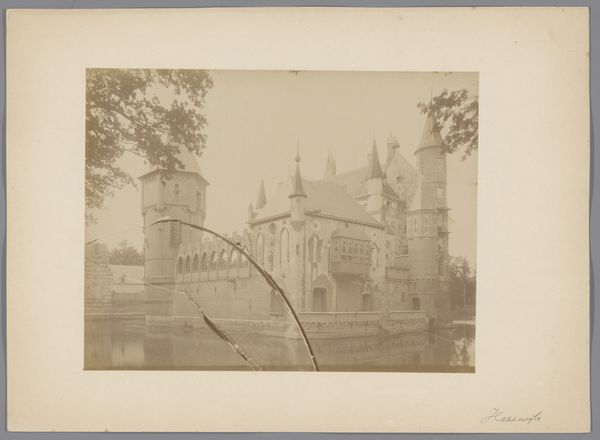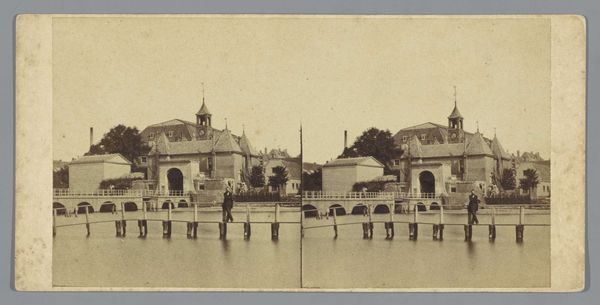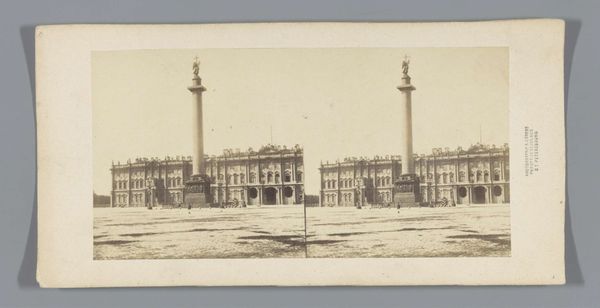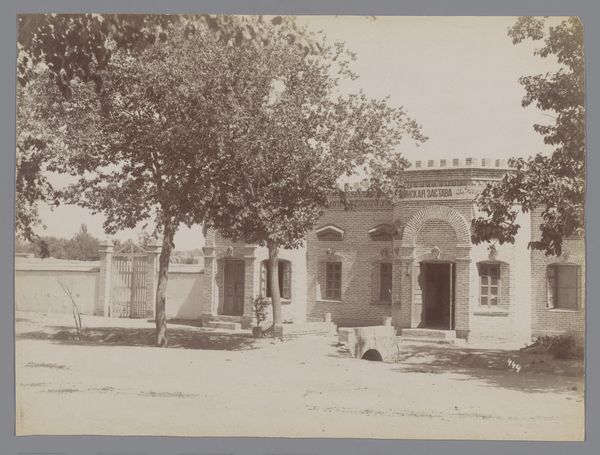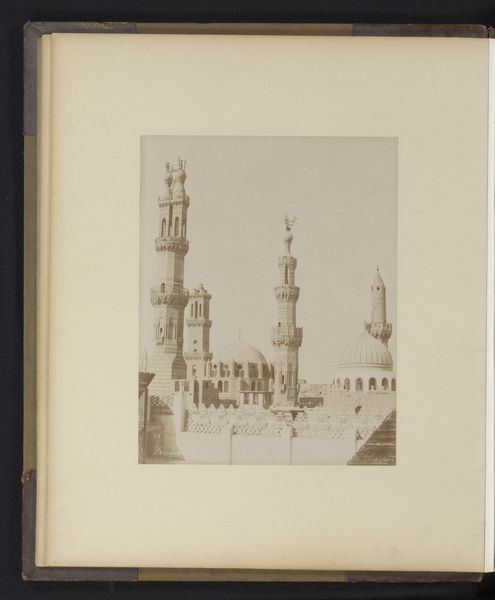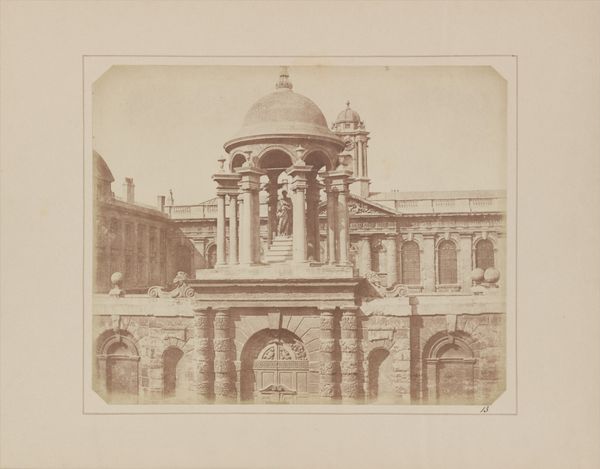![Park in Teheran ["Parc de Sadrazan [?]"], Iran by Antoine Sevruguin](/_next/image?url=https%3A%2F%2Fd2w8kbdekdi1gv.cloudfront.net%2FeyJidWNrZXQiOiAiYXJ0ZXJhLWltYWdlcy1idWNrZXQiLCAia2V5IjogImFydHdvcmtzL2JhYThmNGNjLThiN2YtNDMxOS1iZjk1LTQyMmMwZDVmZTRiMy9iYWE4ZjRjYy04YjdmLTQzMTktYmY5NS00MjJjMGQ1ZmU0YjNfZnVsbC5qcGciLCAiZWRpdHMiOiB7InJlc2l6ZSI6IHsid2lkdGgiOiAxOTIwLCAiaGVpZ2h0IjogMTkyMCwgImZpdCI6ICJpbnNpZGUifX19&w=3840&q=75)
photography
#
landscape
#
photography
#
orientalism
#
cityscape
#
islamic-art
Dimensions: height 155 mm, width 205 mm
Copyright: Rijks Museum: Open Domain
Editor: Here we have Antoine Sevruguin's photograph, "Park in Teheran," taken sometime between 1885 and 1910. The tones are quite muted, almost dreamlike. The composition feels very balanced, but I'm curious how you interpret it, given the subject matter and time period? Curator: The photograph presents a carefully constructed image, meticulously arranged along symmetrical lines. Observe how the architectural elements, particularly the columns and arches, are mirrored across a central axis, lending a sense of stability and order. This, paired with the subtle gradations in tone, creates depth. Note how light and shadow fall upon the building, its reflection rippling softly across the water. These create visual rhythm and texture. Do you agree that the material and technique add an inherent quality to this artwork? Editor: Absolutely! I think that the symmetry does create a powerful, almost classical feeling. It seems to flatten the image somewhat, directing my gaze across the composition horizontally rather than leading my eye into the depths of the picture. Curator: Precisely! The composition reinforces a conceptual flattening, which invites us to consider the surface as a space for formal arrangement. How do the textural qualities of the water’s surface, contrasted against the relatively smooth façade, affect your reading? Editor: It highlights the contrast between the natural and the constructed, maybe? It also draws attention to the two-dimensionality of the photograph. The rippling water seems to disrupt the illusion of depth. Curator: Indeed. The calculated contrast further emphasizes the deliberate artifice. It seems Sevruguin wants to focus us, above all, on composition, lines, texture, and inherent qualities of the picture itself. It is about capturing not a moment, but about using photography to capture artifice. Editor: This makes me appreciate Sevruguin's work in a whole new way, thinking of it less as a captured scene and more as a constructed artistic exercise. Curator: It invites one to consider the fundamental elements, offering insights beyond mere representation.
Comments
No comments
Be the first to comment and join the conversation on the ultimate creative platform.
